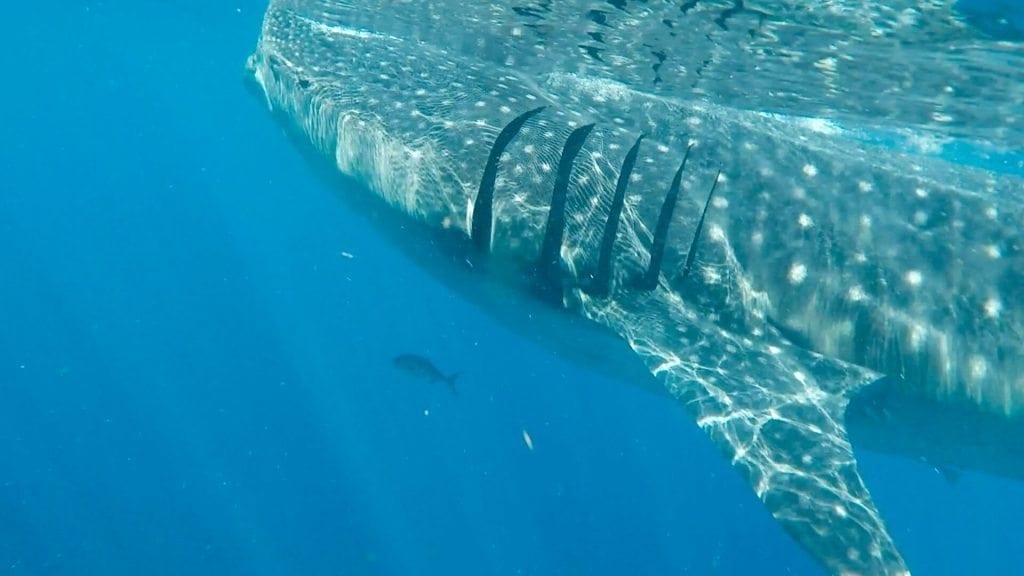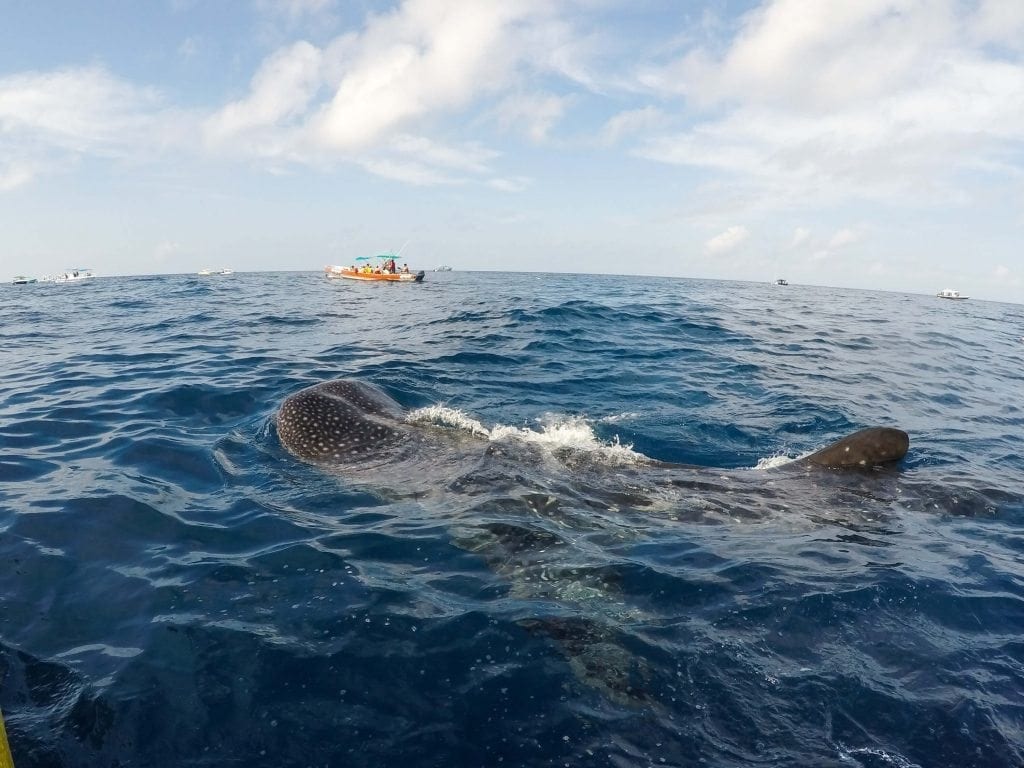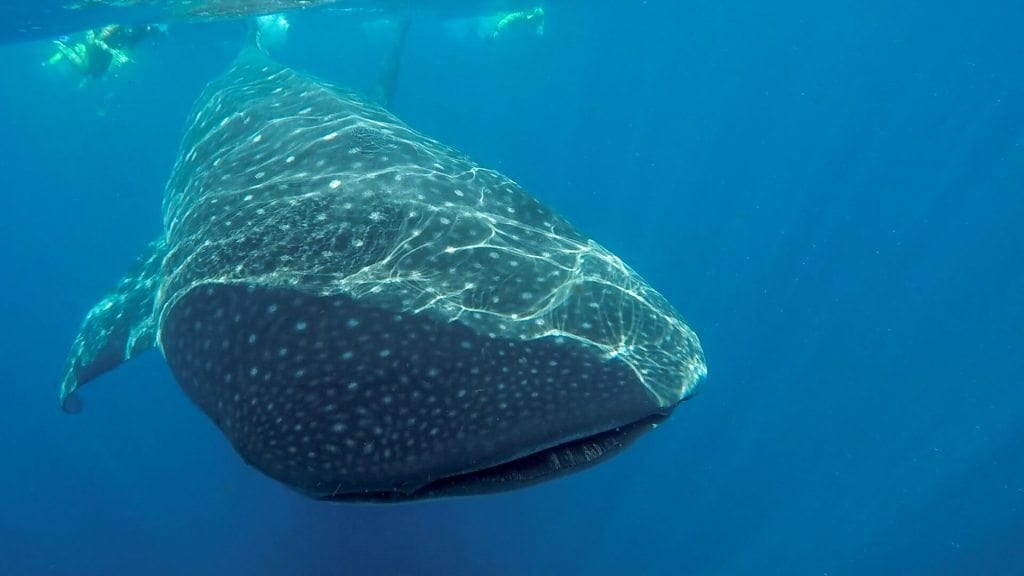Photo Credit thesaltyfern.com
Where Should I Do It?
Swimming with whale sharks is a world-wide bucket list activity, for both professional divers and curious travellers alike. Luckily for us, there are many locations all over the world where in-season sightings of these fascinating creatures is almost guaranteed. Which begs the question, “where should I do it?”. Well that completely depends on where you are in the world, or where you are planning to travel. Here are a few of the most popular destinations to swim with the whale shark.
Honduras, Utila
When to go? March and April
Honduras is one of the cheapest places to do water activities, such as diving or snorkel tours, making it a backpackers dream. This bargain destination is also one of the only places with a year round whale shark population.
Mexico, Isla Holbox
When to go? Mid-June to August
This whale shark zone can be reached from Cancun, Isla Mujeres, and of course, Isla Holbox. However, with it’s laid back way of life, pristine beaches, and fresh fish on tap, Holbox is the obvious way to go.
Belize, Gladden Spit
When to go? April and May
If you’re in Mexico why not pop over to Belize to check out the natural gathering of feeding whale sharks. During March and June there’s a mass fish-spawning period just off the coast of Belize, which attracts extremely high numbers of hungry whale sharks to the area.
Western Australia, Ningaloo Reef,
When to go? Mid-March to July
Ningaloo is Western Australia’s pride and joy. With over 500 species of fish, a whole host of whale sharks, and easy access from Perth, this is Australia’s largest and most accessible reef.
Mozambique, Tofo Beach
When to go? October to March
Mozambique has some of the most pristine coral reefs known to man, and is home to one of the greatest concentrations of whale sharks in the world! So, you can see why this destination a favourite for scuba divers and marine biologists world over.
Photo Credit thesaltyfern.com
What are the rules?
Each country will have it’s own set of rules for swimming with the whale sharks, so be sure to check those out before setting off on your underwater adventure. However, there are some rules that are the same no matter where you decide to take your tour.
- Guests must be accompanied by a guide at all times when in the water.
- In open sea destinations, a life vest or wet suit must be worn at all times.
- You must leave at least 2m between you and the whale shark. Some places allow you to touch and even ‘ride’ the whale sharks, however this is extremely frightening for the animals and is extremely damaging to their fragile skin.
- Do not use flash on your camera or video recorder, this could startle the whale sharks, or any other fish in the area, in some cases completely stunning them.
- Do not stand on or move any coral from the surrounding areas. In a reef zone you should wear a life vest or wet suit to keep you buoyant above the breakable coral below.
- Enter the water slowly so as not to scare or hit a whale shark. There are many cases of people getting too exited and jumping directly on top of a poor whale shark.
- Wear biodegradable sunscreen so as not to poison the animals, or create a film which stops oxygen entering the water.
In some countries there is a lack of education about these beautiful animals, and they may not enforce all of these rules. However, if you implement them, you will not only have an amazing experience, but the whale sharks will also be safe and happy.
Photo Credit thesaltyfern.com
What They Don’t Tell You
The journey out to the actual whale shark zone can be an extremely long, and rough one. Some boat rides can last up to 3 hours before you have even spotted a single whale shark. If you get motion sickness, or if you’ve never been out on a boat before, then err on the side of caution. Be sure to take motion sickness tablets an hour before travelling, or choose a destination with a short journey time.
Contrary to popular belief, it isn’t while the boat is moving that you usually feel sick, it is when the boat has stopped in the open sea. If you do start to feel a little queasy at this time simply put on a life jacket, hop off the boat, and float on your back for a while, you will feel instantly better.
Boats are wet, very very wet! Bring a waterproof bag to put your clothes, camera, or other electronics inside whilst people are entering and exiting the boat. It is completely normal for there to be around an inch of water at the back of the boat during this time, and anything that is unprotected will get soaked.
Bring some strong, biodegradable sun cream, and apply it regularly. Whale sharks are usually found in warm tropical waters, which means that the destination you are in is probably hot and sunny. Whilst on the boat you don’t usually feel the real strength of the sun because you are either in the water, or being kept cool by a strong sea breeze, so it is very easy to burn without noticing.
Fern is a travel blogger from England, who packed up her entire life into one suitcase, and moved to sunny Mexico. If she’s not exploring secluded beaches, or hopping on a plane to a nearby country, you will find her under the waves trying to make friends with the local marine life. Fern’s motto is to travel slowly. She takes time to really get to know a country, immerse herself in its culture, pick up the language, and of course, stuff herself with all the local delicacies!














